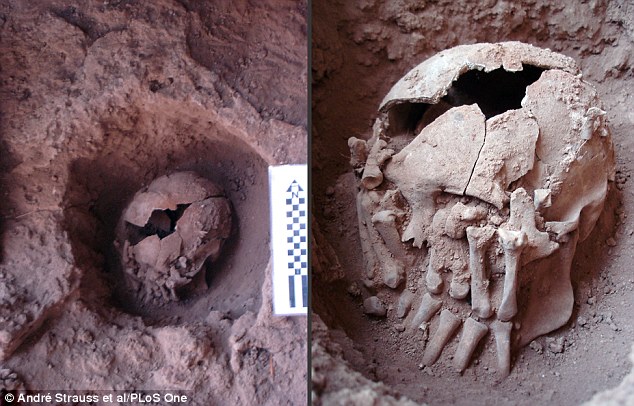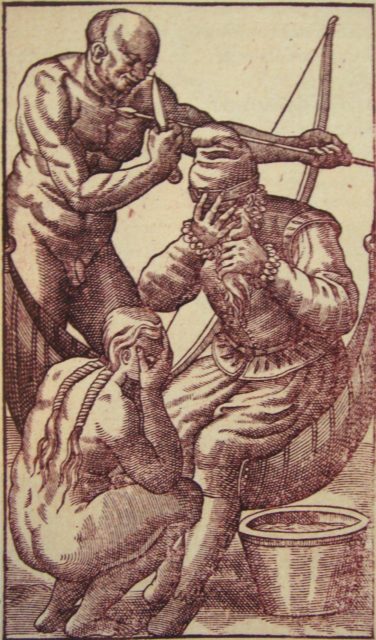Many different countries, old and new, have entertained various kinds of religious beliefs and rituals. Whether the people are civilized or closed off from the outside world, each culture has, and had extensive religious beliefs.
Take the ancient Mexican people – they had been known for religious sacrifices designed to please their gods. Another culture that happened to do grisly rituals to please their gods was in Brazil.
Remains were found in a cave called Lapa do Santo in Lagoa Santa, Brazil. Anthropologists who were on this dig certainly weren’t ready for this particular discovery. Although they are rather used to digging up remains and analyzing them extensively, they were not ready for this grisly find.
The experts had discovered what they believe is the oldest case of ritualistic beheading. This find is even the first-ever found in the Americas.
On further analysis of the remains, it was found that they date back to nearly 9,000 years ago. The skull was unearthed along with a pair of amputated hands. Anthropologists had found the head with the amputated hands placed in opposite directions on the face.

There was evidence of cut marks that had suggested the flesh had been removed from the bones before the body was buried.

The researchers on the dig believe that the remains will help them study about the particular origins of the decapitation practices which eventually became widespread throughout all of South America. The people there were known as Tupinamba and had been recognized for collecting heads as war trophies.
Other people who collected heads, the Arara Indians, had used them as musical instruments rather than trophies. Another culture who used heads was the Chmiu culture in Peru. They had collected the decapitated heads after using the people as human sacrifices.
After further analyzing the skull, researchers found that the head had once belonged to a younger man who had been a member of the humans who inhabited the cave, rather than an enemy. Study of the hand placement on the skull suggested that the beheading and positioning had all been a part of a ritual or ceremony.
There had been smaller cuts on the skull which suggested that the soft skin around the skull had been cut away from the bone before burial.
Researchers on the dig are still unsure as to why the man’s head was removed, especially since he was a part of the tribe. The experts believe that the head could have been removed after the man had died.
The lead researcher on the dig, Dr. Andre Strauss, had written that the ritualistic decapitation had shown them the early sophistication of death rituals among the hunter-gatherer people. He added that the find from Lapa do Santo has allowed the researchers to see just how far back the practice of decapitation has gone in South America.
He even went as far as explaining that geographically, the find expands the known range of the practice to be more than 1,240 miles. This shows that during the early Holocene period, it was not a ritual that was restricted to only the western part of South America, as was previously thought.
Before these remains were found, it was thought that the earliest case of decapitation in South America had happened in the Peruvian Andes, dating to about 3,000 years ago. The oldest known case found in North America was in Florida and dated to around 6,990 to 8,120 years old.
Lapa do Santo is believed to have been occupied by humans nearly 12,000 years ago. Artifacts found in the general area, such as stone tools and animal bones, had suggested that the prehistoric hunter-gatherers had used the area for some time.
Back in 2007, the anthropologists found the skull, jaw, and the first six vertebra of the neck, along with the young man’s two severed hands, in a shallow pit in the cave. The pit had been covered by limestone slabs, which suggests that the head and other body parts were carefully buried.
The hands were cut from the rest of the man’s body and were then placed, with the palms down, over his face. The left hand had been pointed up on the right side of the face, with the right hand pointing down on the left side of the face.

Another researcher on the dig, Domingo Carlos Salazar-Garcia, said that the decapitation seems like it was not a violent act. He added that a look at the chemical analysis of the strontium isotopes indicates that the man was not an outsider to this particular group. This means that he had not been a defeated enemy, but merely a member of the community.
Some of the other remains found in the Lagoa Santa area are actually quite different than this particular find, often having been buried in a manner much simpler than this young man’s burial. The researchers on the excavation stated that early humans in South America had rather complex burial rituals.
They had written that the remains didn’t reveal any drill holes or an enlargement which would indicate that it was a trophy head. Researchers also added that the way the hands were carefully arranged had been a way to publicly display the remains. It could have also been arranged that way to “enhance social cohesion”.
